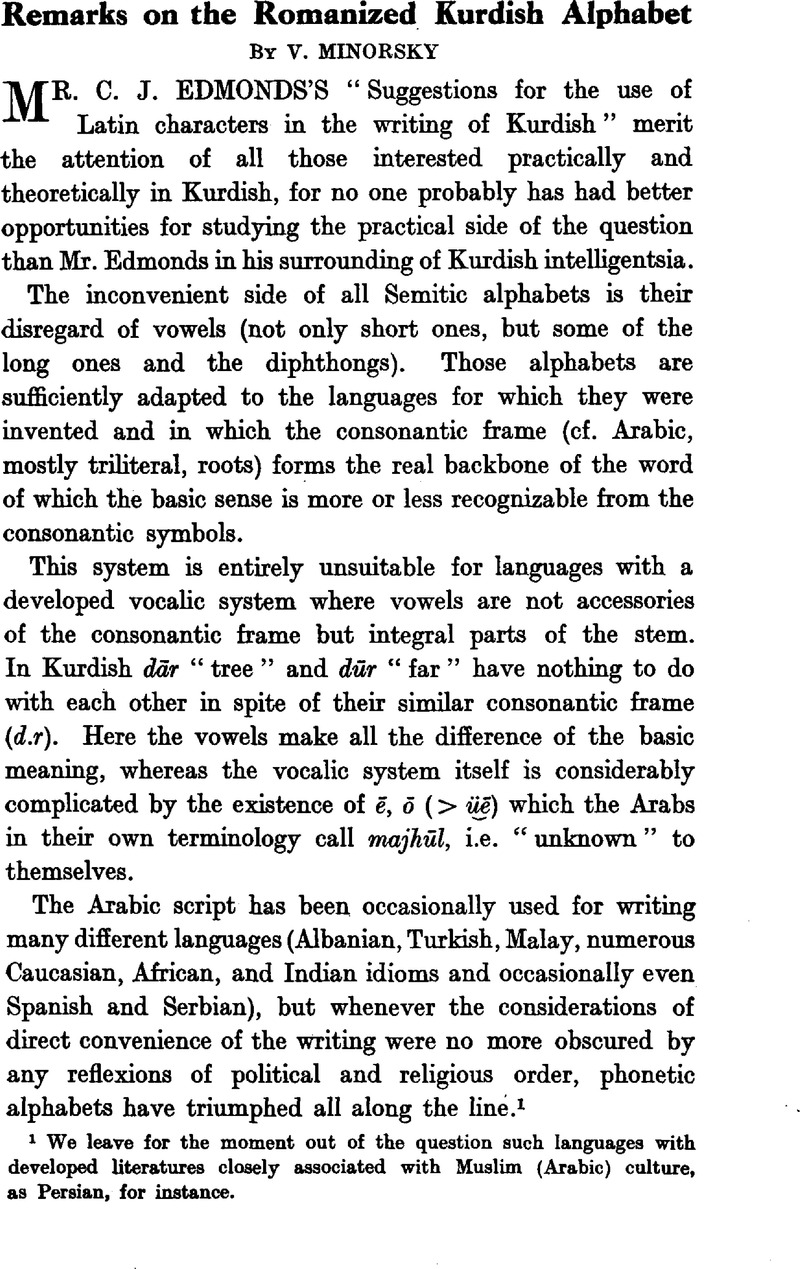No CrossRef data available.
Published online by Cambridge University Press: 24 August 2021

page 643 note 1 We leave for the moment out of the question such languages with developed literatures closely associated with Muslim (Arabic) culture, as Persian, for instance.
page 646 note 1 The special signs in our alphabet would consequently remain restricted to two: ï and ö
page 646 note 2 In E 2 y has a threefold use for expressing consonantic y, short ï, and the length of ï (iy).
page 648 note 1 In handwriting ![]() could be expressed still better by apiritus asper.
could be expressed still better by apiritus asper.
page 650 note 1 — means “no change”, and ? “not expressed”.